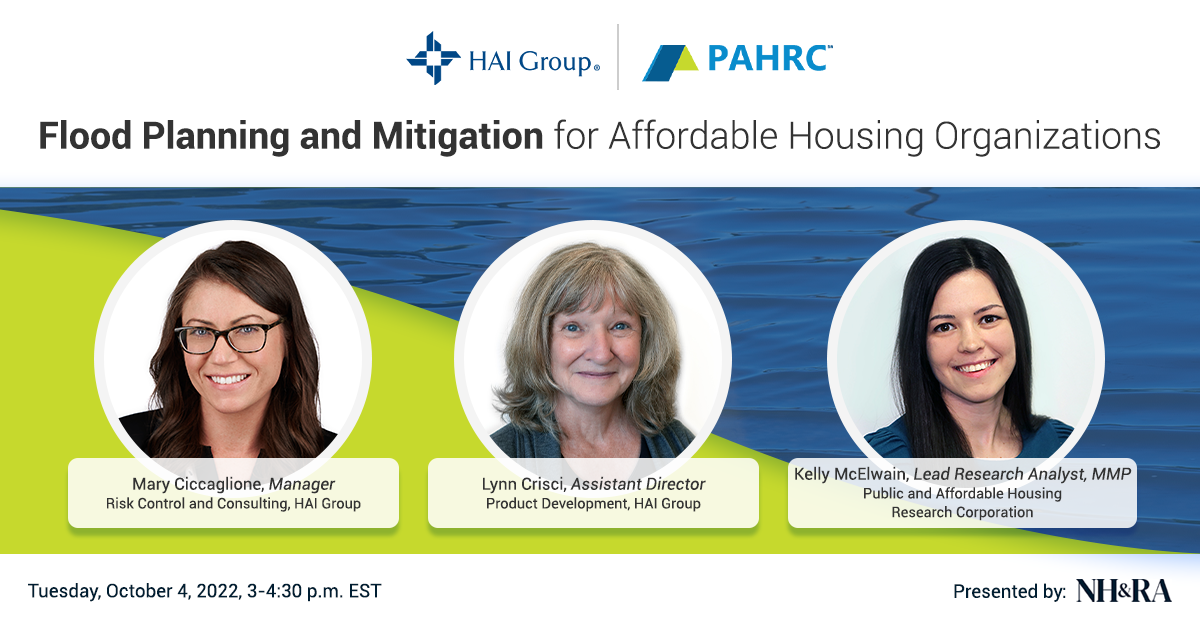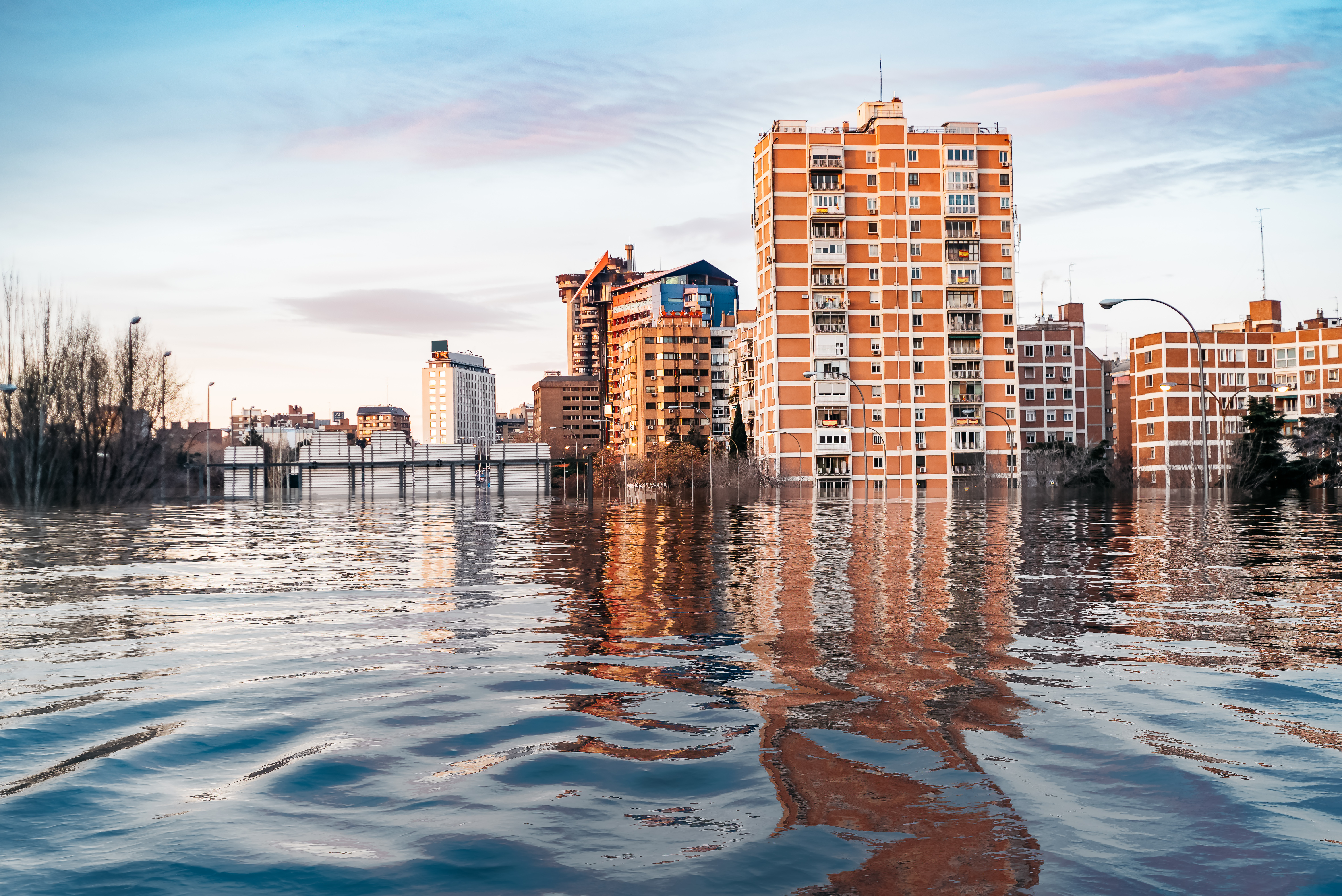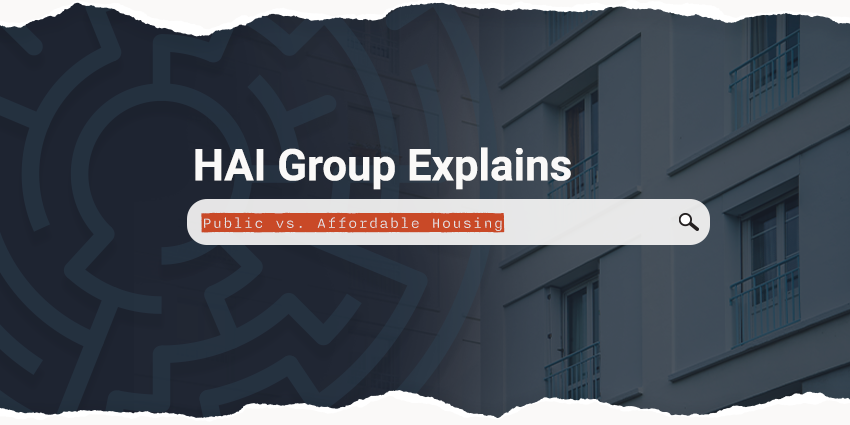The Public and Affordable Housing Research Corporation (PAHRC), is the research entity of HAI Group, an insurer exclusively serving public and affordable housing for more than 35 years. PAHRC’s work focuses on the impact that affordable homes bring to families and communities. In this guest blog, Kelly McElwain, PAHRC’s industry intelligence and research manager, explains how you can make your properties more resilient to natural hazards.
Investing in the resilience of affordable homes is critical as the threat of severe weather continues to grow. Natural disasters not only exacerbate the existing affordable housing shortage but can also disproportionately impact those living in affordable homes.
New research from PAHRC and the National Low Income Housing Coalition finds that 24% of affordable rental homes are in census tracts with the greatest potential for negative impacts from natural hazards nationwide. Most affordable homes are in communities at high risk of economics losses for at least one of the 18 natural hazards studied. Of the six most destructive hazards, heat waves are the most prevalent hazard threatening residents of federally assisted homes, followed by tornado, riverine flooding, and earthquake. The share of affordable homes in census tracts at the greatest risk for negative impacts is the greatest in the South and West Coast. However, investment in risk mitigation in affordable housing across the country is essential to protect the residents that rely on it from the growing risks posed by natural hazards.

Source: National Housing Preservation Database (January 2023), National Risk Index (March 2023).
Understanding Your Local Hazards
The first step to prepare for natural hazards is to identify the most common risks in your area. Climate risk assessments can inform disaster preparedness and mitigation plans, guide decisions on where and how to construct new properties, support grant applications, assess insurance needs, and equip you to advocate for the inclusion of affordable housing in community-wide planning efforts. Risk assessment tools your organization can leverage include:
FEMA’s National Risk Index estimates the potential impacts for 18 natural hazards at the county and census tract level, which can help you understand which weather and geological events pose the most significant threats to your jurisdiction and identify high-risk areas.

First Street Foundation’s Risk Factor explores risk properties are projected to face over the next 30 years from flooding, wildfire, extreme heat, and wind.
Storm Surge Risk Maps allows you to identify the storm surge zones if hurricanes of varying intensities were to hit your community.
These tools do not replace individualized assessments which combine property and climate characteristics provide the most complete picture of natural hazard risks for your portfolio.
Strategies to Enhance Resilience
Once you assess the risks in your portfolio, consider your disaster preparedness plan, the building systems in place, and infrastructure around your buildings to identify opportunities to protect your properties and residents. The following guides can help you identify retrofit and mitigation strategies to make your properties more resilient:
HAI Group’s Climate Disaster Toolkit can help you identify the latest tips to protect your residents from winter weather, heat, flood, and other catastrophic weather events. The toolkit also includes recommendations to partner with local fire officials and strategies to coordinate emergency response plans.
Ready to Respond: Strategies for Multifamily Building Resilience lists the cost to implement strategies to make multifamily buildings resilient to severe weather.
Securing Funding for Hazard Mitigation Projects
Federal and state programs can help make your hazard mitigation projects a reality. Key opportunities are summarized below:
Green and Resilient Retrofit Program (Comprehensive Cohort) provides up to $80,000 per unit or $20M per property to fulfill deep utility efficiency, renewable energy generation, carbon emissions reductions, and climate resilience retrofits. Section 8 Project Based Rental Assistance, 202, and 811 assisted properties with the greatest natural hazard risk and energy efficiency needs will be competitively selected for this program over application waves due in November 2023 and February and May 2024. Owners do not need to submit a scope of work or have experience with recapitalization or green construction to apply. You can learn more about this program on HAI Group’s webinar, Harnessing HUD's Green and Resilient Retrofit Program to Combat Climate Change and apply here.
Community Development Block Grant (CDBG) program can be used to activities that benefit low-income people, eliminate blight, or address threat to health or safety of residents. Check with your local CDBG HUD grantee to confirm application windows.
Competitive FEMA grants, such as Building Resilient Infrastructure and Communities (BRIC), Pre-Disaster Mitigation Grant Program (PDM), and Flood Mitigation Assistance Program, can be leveraged to make affordable housing properties more resilient to disasters. Only states, territories, and tribal governments can apply for these programs, however. Affordable housing providers must partner with these agencies as sub applicants. To learn more about these programs, application priorities, deadlines, and requirements in your area, contact your State Hazard Mitigation Officer.
State and local government grants may also be available in your area. Contact your local emergency planner and State Hazard Mitigation to learn about any locally funded resiliency programs.
Additional funding opportunities to fund climate resiliency, energy efficiency, healthy housing, and renewable energy can be found in HUD’s Funding Navigator.
Interested in learning more to make your properties more resilient? HAI Group’s Online Training platform includes a risk management pathway to deepen your knowledge.






